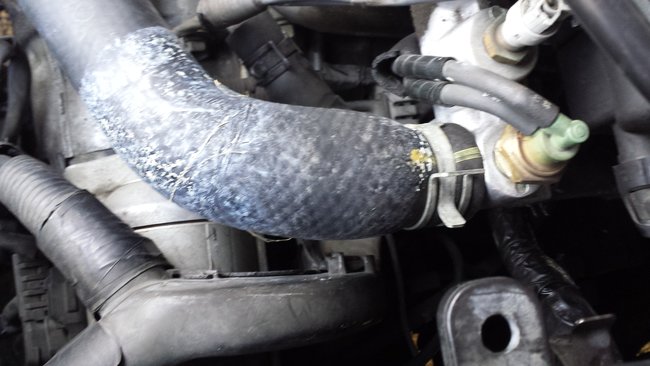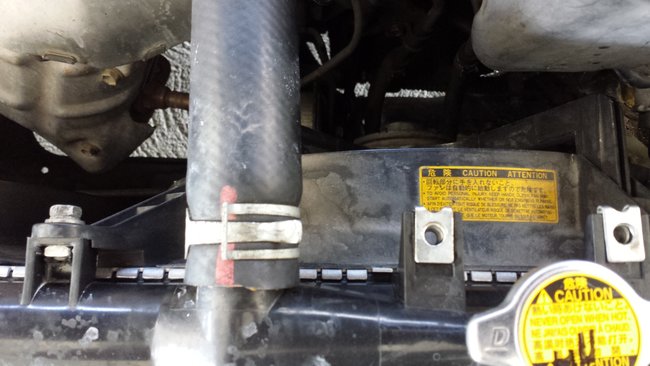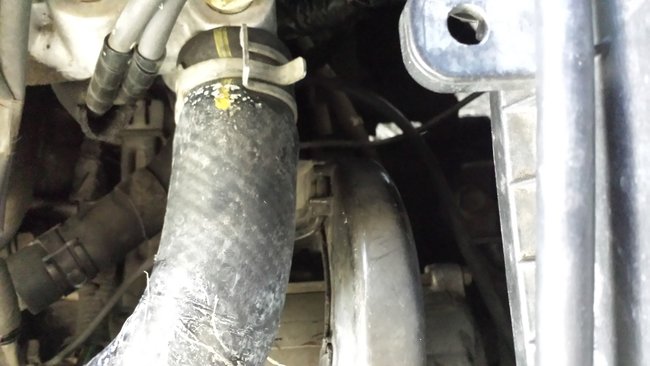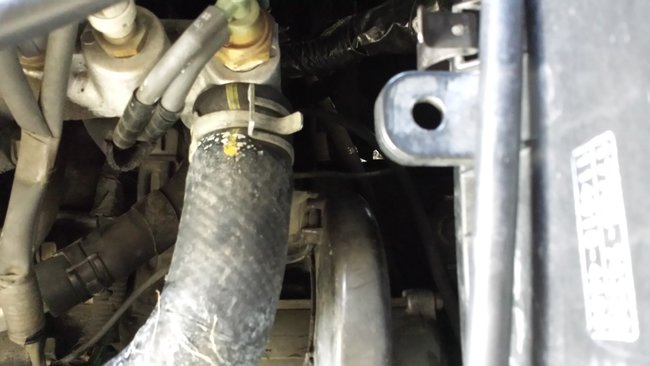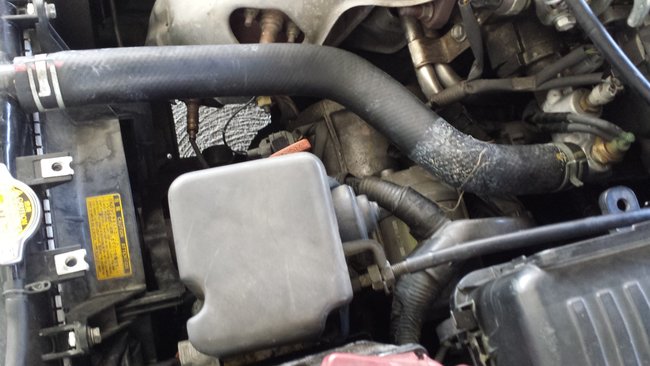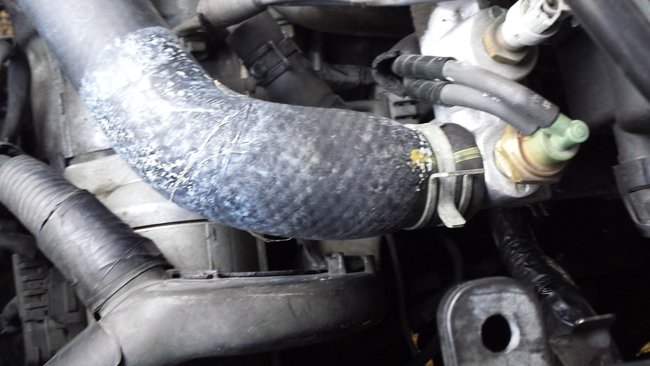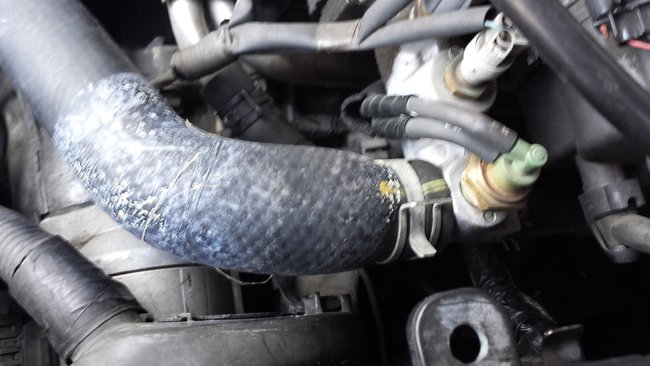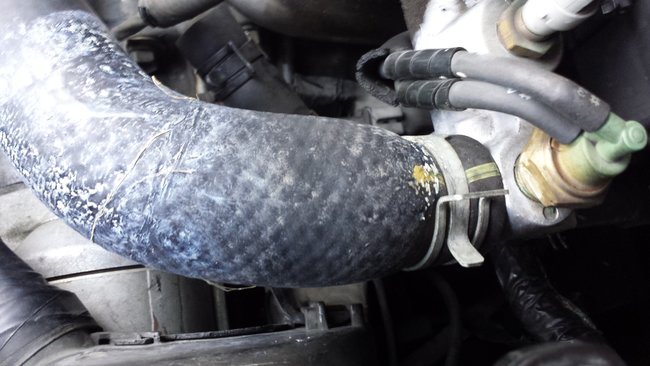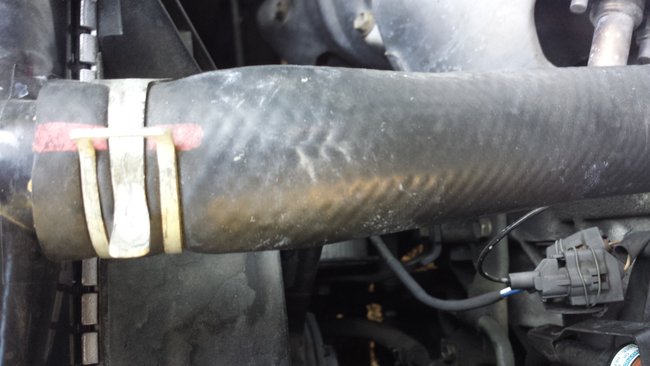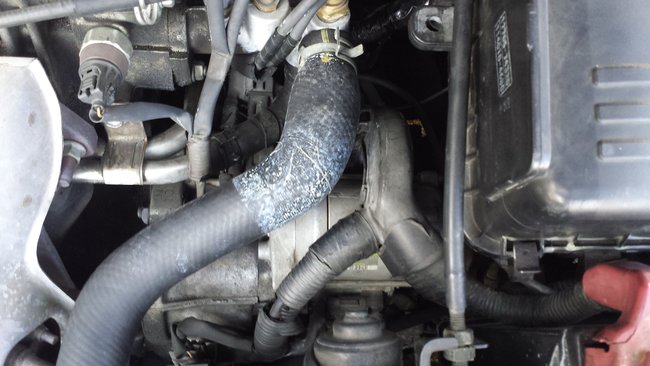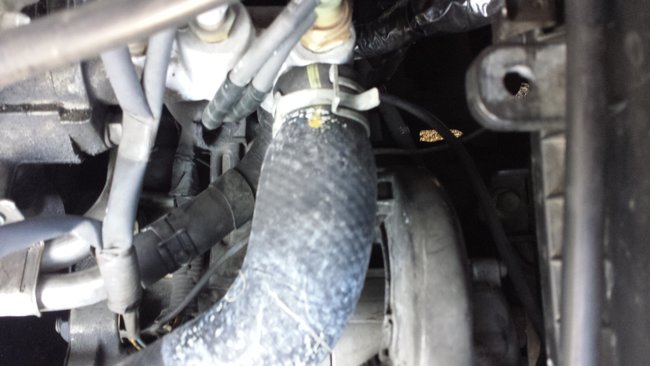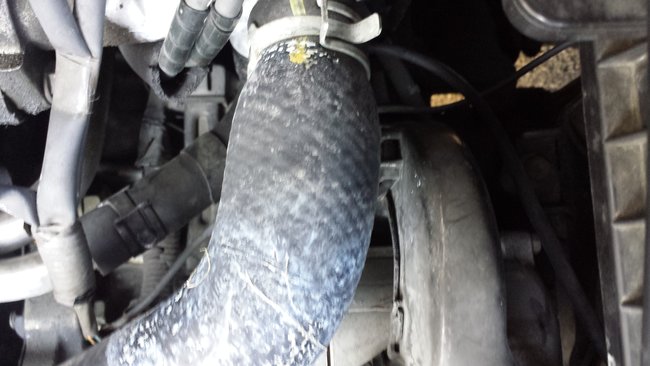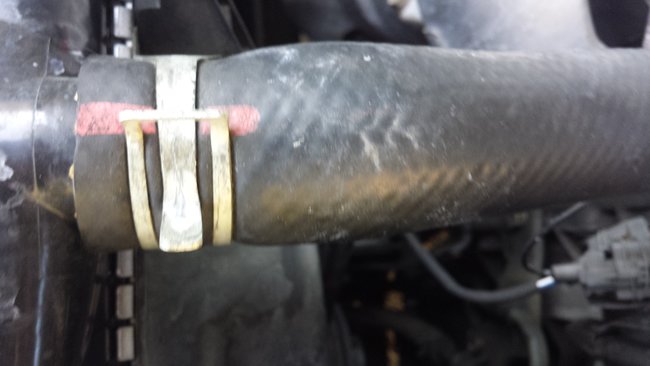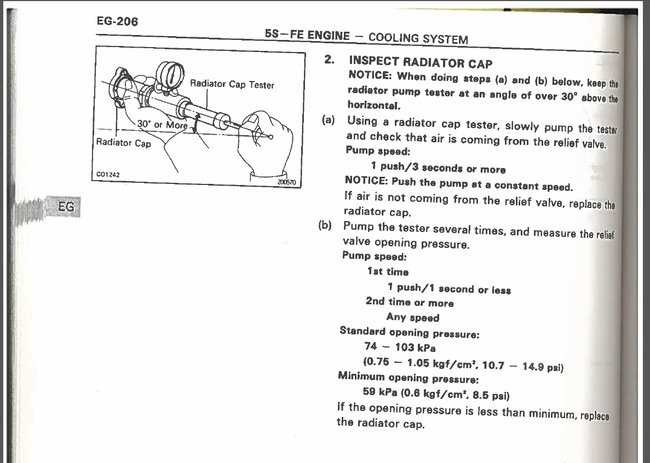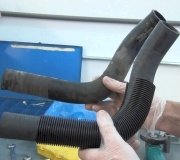When fully warmed, my upper hose is noticeably swollen, more so at the the engine connector. (Which is to be expected as there hot coolant enters the hose before it bends).
I know OEM Toyota hoses last a long time. I replaced previous ones after sixteen years, 150,000 miles as the precaution, they looked fine. I also know they are somewhat thin and soft even when new and supposed to swell somewhat by design.
I pressure tested my cooling system it was perfectly fine. I got and tested several caps both new and used, and pressure tested them according to the OEM repair manual. Strangely, several OEM Toyota
caps I got were new and correct, 88Pa (.9 bar) actually open all past 1.5 bar when tested! Some way more! (I tested about five from different souses all correct 88Pa). The manual says should be within 74-108 Pa, discard if less it says nothing what if more, is it okay? All cause the same hose swelling.
Now, I have one worn cap, opens almost at no pressure. That one of course causes no swelling at all. And the car runs fine with it, no overheating whatsoever it just fills and overfills the bottle after a run which is to be expected with very little pressure. That is it. And no I do not have head gasket problems (it would not matter anyway as the cap would release the gasses).
Now my question, how much swelling of the upper radiator hose is normal, by design, to ignore and nothing to worry about? General answers online have a lot of nonsense you have this, you have that.
From your experience what is the normal, acceptable swelling of the upper OEM Toyota hose car fully warmed up? With a brand new (or unworn) cap?
Thanks a lot!
Larry
Wednesday, February 21st, 2018 AT 12:34 PM
